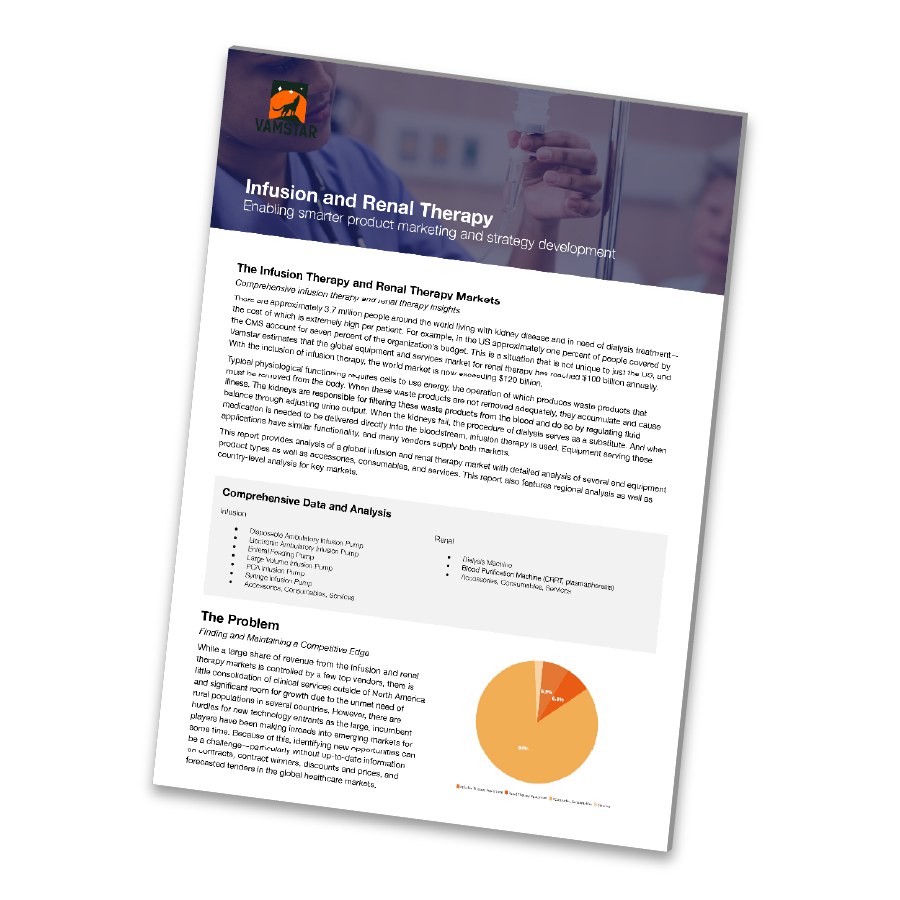The Infusion and Renal Therapy Market
There are approximately 3.7 million people around the world living with kidney disease and in need of dialysis treatment—the cost of which is extremely high per patient. For example, in the US approximately one percent of people covered by the CMS account for seven percent of the organization’s budget. This is a situation that is not unique to just the US, and Vamstar estimates that the global equipment and services market for renal therapy has reached $100 billion annually. With the inclusion of infusion therapy, the world market is now exceeding $120 billion.
Typical physiological functioning requires cells to use energy, the operation of which produces waste products that must be removed from the body. When these waste products are not removed adequately, they accumulate and cause illness. The kidneys are responsible for filtering these waste products from the blood and do so by regulating fluid balance through adjusting urine output. When the kidneys fail, the procedure of dialysis serves as a substitute. And when medication is needed to be delivered directly into the bloodstream, infusion therapy is used. Equipment serving these applications have similar functionality, and many vendors supply both markets.
This report provides analysis of a global infusion and renal therapy market with detailed analysis of several end equipment product types as well as accessories, consumables, and services. This report also features regional analysis as well as country-level analysis for key markets.
THE PROBLEM
While a large share of revenue from the infusion and renal therapy markets is controlled by a few top vendors, there is little consolidation of clinical services outside of North America and significant room for growth due to the unmet need of rural populations in several countries. However, there are hurdles for new technology entrants as the large, incumbent players have been making inroads into emerging markets for some time. Because of this, identifying new opportunities can be a challenge—particularly without up-to-date information on contracts, contract winners, discounts and prices, and forecasted tenders in the global healthcare markets.
BENEFITS
Drive strategy with regularly updated datasets.
Identify which product markets hold the most opportunity.
Gain insight into competitive positioning.
Visualize the comprehensive global market or drill down into product-level detail.

Contact